Southwest Michigan field crop regional report– April 18, 2013
The cold and wet weather will continue as southwest Michigan growers prepare to move back into fields over the next few weeks.
Weather
The winter of 2012-13 is a tale of two seasons. Warm and dry conditions in November, December and the first weeks of January left many folks wondering if we were going to see a repeat of 2012. Winter returned with a vengeance, however, from late January through March and early April. Widespread areas of southwest Michigan received 2 to 3 inches of precipitation over the last week.
Storm total precipitation from rainfall on April 17 and overnight into the morning of April 18 show rainfall totals of 2 to 4 inches or more in widespread areas of Allegan, Ottawa and Barry counties and portions of Van Buren County, and widespread totals of an inch or more over substantial portions of the region. It is safe to say that field conditions will range from extremely wet to flooded for the next week.
With the 6-10 and 8-14 day outlooks predicting colder than normal temperatures, cold and wet will remain the story as growers prepare to move back into fields over the next couple of weeks. The one bright spot may be that the precipitation outlook in the 8-14 day time frame indicates a return to more normal levels for the lower two tiers of counties in Michigan. The rainfall will help low surface water resources to recover, which is good news following last summer's extreme drought.
Precipitation totals across the region range from 2 to 7 inches above normal over the last four weeks, with the majority of this precipitation occurring over the last two weeks. Base 50 growing degree day (GDD) accumulation in Three Rivers, Mich., since March 1 is about six to seven “normal” days behind the long-term average. We normally accumulate 6 GDDs per day next week.
Growing degree days in Three Rivers, Mich., from March 1-April 18, 2013.
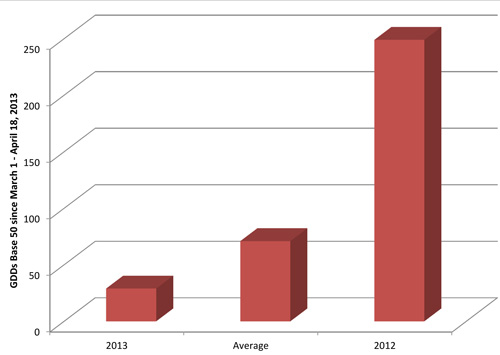
Date: MSU Agricultural Weather Office
Field preparation
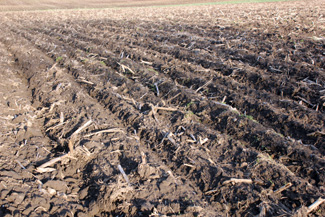 Wet conditions will most likely cause a later start to the planting season across the state than we have become accustomed to in the last several years. It is important to keep in mind that we are not really in bad shape at this point in the growing season. We had excellent conditions to conduct fall tillage, and many producers completed a major portion of their primary tillage during that period. This can be important in helping cold and wet soils warm up and dry off more quickly than those soils that have not been worked. Make sure soils are dry enough to traffic and plant without causing compaction when you are able to start.
Wet conditions will most likely cause a later start to the planting season across the state than we have become accustomed to in the last several years. It is important to keep in mind that we are not really in bad shape at this point in the growing season. We had excellent conditions to conduct fall tillage, and many producers completed a major portion of their primary tillage during that period. This can be important in helping cold and wet soils warm up and dry off more quickly than those soils that have not been worked. Make sure soils are dry enough to traffic and plant without causing compaction when you are able to start.
Winter annual weeds have rapidly responded to the warmer temperatures and nitrogen provided by the thunderstorm events. 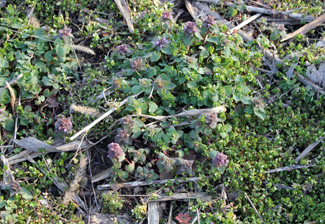 Keep track of fields where winter annual growth has occurred and scout these fields later for black cutworm larval feeding. We are placing monitoring traps out this week to look for black cutworm moth arrival, which could be possible with the push of warm air into the region with the moisture.
Keep track of fields where winter annual growth has occurred and scout these fields later for black cutworm larval feeding. We are placing monitoring traps out this week to look for black cutworm moth arrival, which could be possible with the push of warm air into the region with the moisture.
Early planting
The temperature of the soil moisture first imbibed by the seed is important for seedling health, growth and development. To avoid chilling injury for both corn and soybeans, try to plant on days when soil temperatures are warm and the forecast predicts warm weather for at least 24-36 hours.
Corn
It takes approximately 110 to 115 GDDs Base 50 for corn to emerge. With an average accumulation of 6 to 10 GDDs per day in late April, it takes substantial time for corn plants to emerge. This can be important in fields that have been taken out of CRP where soil insects such as wireworms and white grubs can potentially be an issue. Seed insecticide treatment or soil applied insecticides may be warranted in early planted fields of this type.
If you have seen increases in corn rootworm larval feeding (lodged or goosenecked corn), especially in fields where you have planted continuous Bt corn, be prepared to rotate your crop in 2013. MSU field crops entomologist Christina DiFonzo reports that crop rotation of these fields and perhaps adjacent fields is the best strategy to control potentially resistant beetles on your farm. Be sure to control volunteer corn in these fields to minimize the chance for survival of the corn rootworm larvae. Growers have a wide variety of post-emergence grass herbicides to control volunteer corn. The Michigan State University Extension “Weed Control Guide for Field and Forage Crops” (E-434) outlines post-emergence grass and volunteer herbicide options in soybeans (page 66).
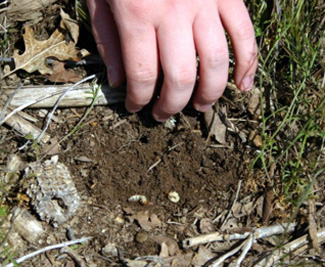 White grubs and Asiatic garden beetle larvae continue to cause sporadic stand losses in rotated corn fields following soybeans and alfalfa in southwest Michigan. We have not been able to understand why some fields may experience stand reductions while adjacent fields suffer little or no damage. Damage severe enough to cause replanting on a few fields occurred in Allegan, Cass and St. Joseph counties in 2012.
White grubs and Asiatic garden beetle larvae continue to cause sporadic stand losses in rotated corn fields following soybeans and alfalfa in southwest Michigan. We have not been able to understand why some fields may experience stand reductions while adjacent fields suffer little or no damage. Damage severe enough to cause replanting on a few fields occurred in Allegan, Cass and St. Joseph counties in 2012.
Be on the lookout for white grubs being turned up when conducting primary and secondary tillage. Asiatic garden beetles can be distinguished from other white grub species by the bulbous stipe (visible white growth) on the "cheeks" of the grub. The larvae are very active if you pick them up and have a tendency to bite you as they squirm to get away. If you are finding higher levels of Asiatic garden beetle larvae in fields before you plant, consider applying full rates of a soil insecticide. Seed treatments at the 1,250 level can also help. It is important to keep in mind that large numbers of this aggressive root pruning pest can "overwhelm" these controls.
Wheat
Winter wheat has broken dormancy and is beginning growth. The fields I checked in Van Buren County looked pretty good. Early growth looks excellent with little evidence of winter injury in the fields that I have walked. Some growers have applied nitrogen to their fields. Cool soil temperatures should have limited the conversion of the ammonium portion of the nitrogen applied to nitrates. With the heavy rainfall we have received over the last several days, this is probably good.
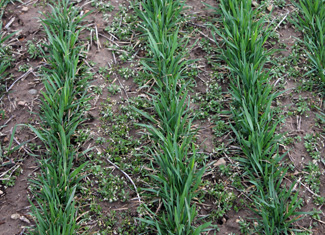 Winter annual weeds, especially chickweed, are beginning to become evident in many fields across the region. Many growers discount the potential impact of winter annual weeds on wheat growth and development. While these weed species do not remain competitive throughout the growing season, they can compete for water, nutrients and light early in the spring. The University of Missouri recently reported that winter annual weeds can reduce yield potential by 10 percent.
Winter annual weeds, especially chickweed, are beginning to become evident in many fields across the region. Many growers discount the potential impact of winter annual weeds on wheat growth and development. While these weed species do not remain competitive throughout the growing season, they can compete for water, nutrients and light early in the spring. The University of Missouri recently reported that winter annual weeds can reduce yield potential by 10 percent.
Evaluate fields for winter annual and early emerging summer annual weeds. Review options for early season weed control in wheat in MSU Extension’s “Weed Control Guide for Field and Forage Crops.”
Alfalfa
Alfalfa has also broken dormancy and is responding to the warmer and moister conditions. I have not seen signs of winter injury. Early growth remains limited. The crop is significantly behind schedule in terms of growth and development.
Growers should begin looking for signs of overwintering adult alfalfa weevil feeding, especially in areas of the field that have protected southern exposed slopes, a pattern more typically found in March than in mid-April. With hay supplies already tight, hopefully conditions will warm up and kick production into high gear.



 Print
Print Email
Email


